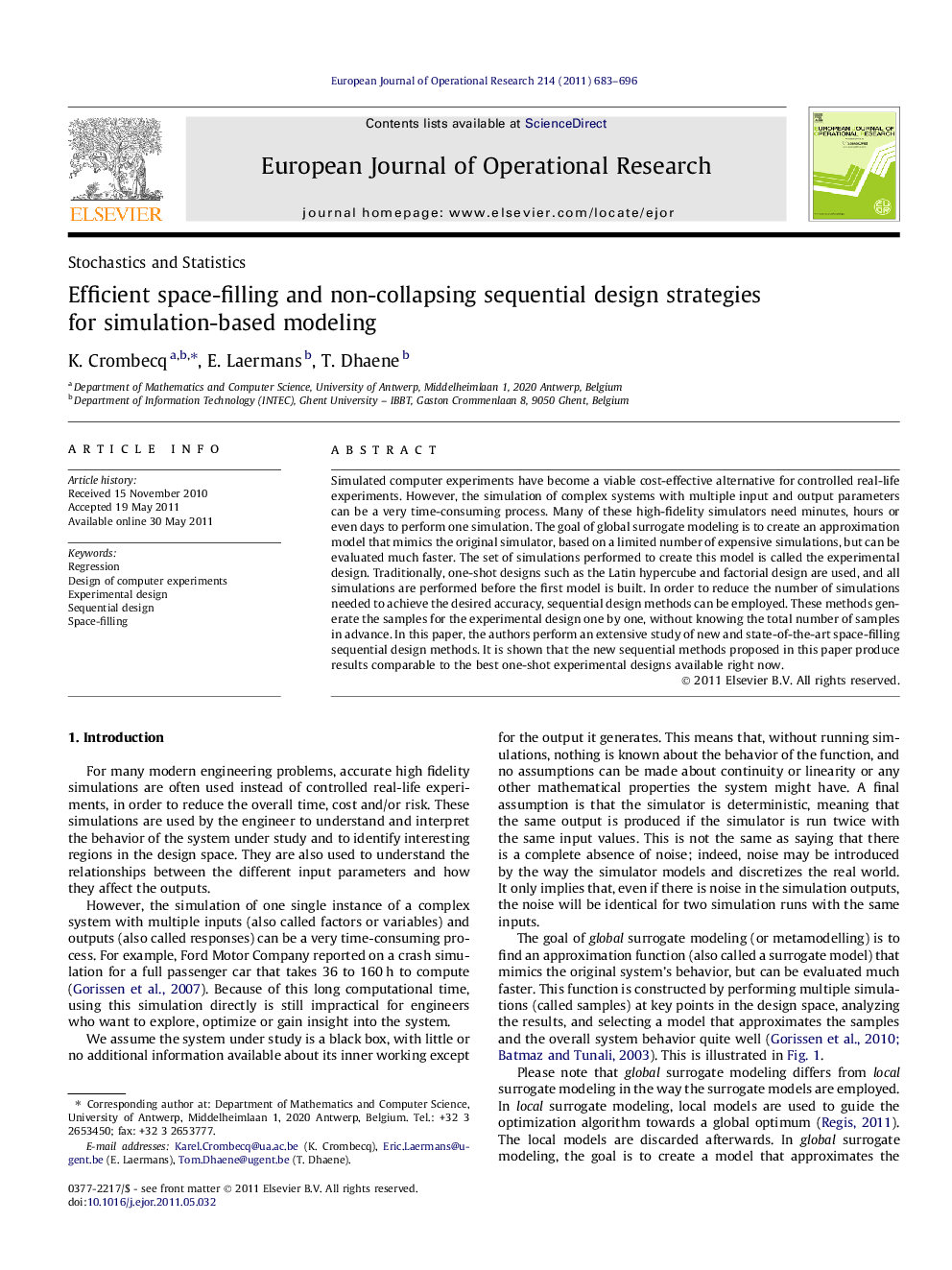| Article ID | Journal | Published Year | Pages | File Type |
|---|---|---|---|---|
| 476935 | European Journal of Operational Research | 2011 | 14 Pages |
Simulated computer experiments have become a viable cost-effective alternative for controlled real-life experiments. However, the simulation of complex systems with multiple input and output parameters can be a very time-consuming process. Many of these high-fidelity simulators need minutes, hours or even days to perform one simulation. The goal of global surrogate modeling is to create an approximation model that mimics the original simulator, based on a limited number of expensive simulations, but can be evaluated much faster. The set of simulations performed to create this model is called the experimental design. Traditionally, one-shot designs such as the Latin hypercube and factorial design are used, and all simulations are performed before the first model is built. In order to reduce the number of simulations needed to achieve the desired accuracy, sequential design methods can be employed. These methods generate the samples for the experimental design one by one, without knowing the total number of samples in advance. In this paper, the authors perform an extensive study of new and state-of-the-art space-filling sequential design methods. It is shown that the new sequential methods proposed in this paper produce results comparable to the best one-shot experimental designs available right now.
► We propose several new algorithms for sequentially generating space-filling designs. ► These new algorithms can compete with existing, proven, state-of-the-art sequential and non-sequential methods such as Latin hypercubes. ► The new algorithms are extremely fast, can work with high-dimensional data and do not need to know the total number of data points up front.
